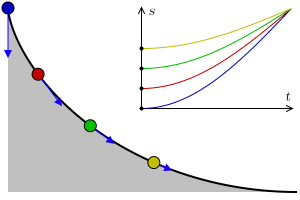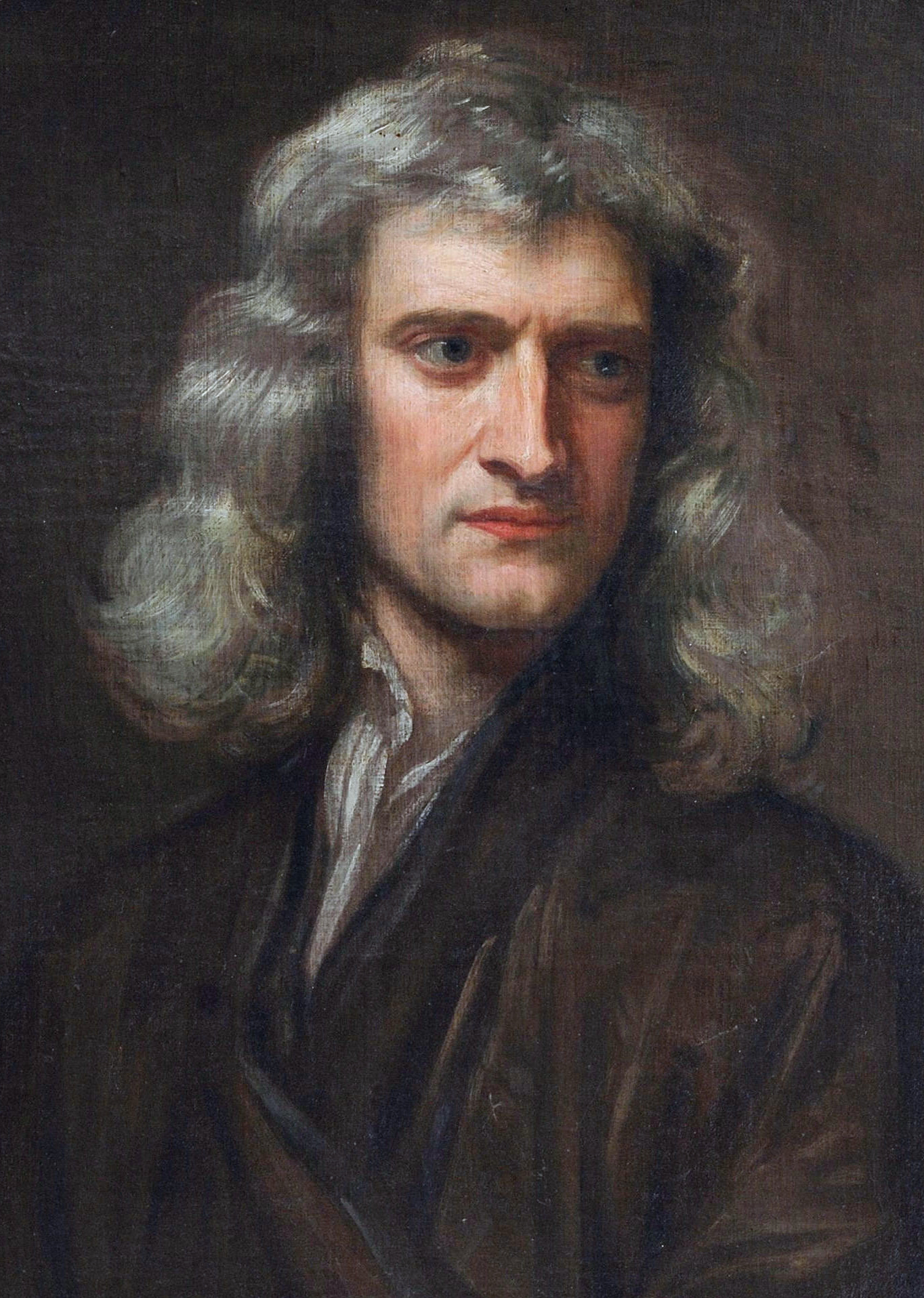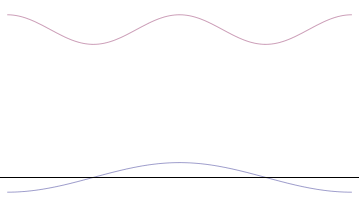 |
Position And Momentum Spaces
In physics and geometry, there are two closely related vector spaces, usually three-dimensional but in general of any finite dimension. Position space (also real space or coordinate space) is the set of all ''position vectors'' r in Euclidean space, and has dimensions of length; a position vector defines a point in space. (If the position vector of a point particle varies with time, it will trace out a path, the trajectory of a particle.) Momentum space is the set of all ''momentum vectors'' p a physical system can have; the momentum vector of a particle corresponds to its motion, with dimension of masslengthtime−1. Mathematically, the duality between position and momentum is an example of ''Pontryagin duality''. In particular, if a function is given in position space, ''f''(r), then its Fourier transform obtains the function in momentum space, ''φ''(p). Conversely, the inverse Fourier transform of a momentum space function is a position space function. These quantities and ... [...More Info...] [...Related Items...] OR: [Wikipedia] [Google] [Baidu] |
 |
Physics
Physics is the scientific study of matter, its Elementary particle, fundamental constituents, its motion and behavior through space and time, and the related entities of energy and force. "Physical science is that department of knowledge which relates to the order of nature, or, in other words, to the regular succession of events." It is one of the most fundamental scientific disciplines. "Physics is one of the most fundamental of the sciences. Scientists of all disciplines use the ideas of physics, including chemists who study the structure of molecules, paleontologists who try to reconstruct how dinosaurs walked, and climatologists who study how human activities affect the atmosphere and oceans. Physics is also the foundation of all engineering and technology. No engineer could design a flat-screen TV, an interplanetary spacecraft, or even a better mousetrap without first understanding the basic laws of physics. (...) You will come to see physics as a towering achievement of ... [...More Info...] [...Related Items...] OR: [Wikipedia] [Google] [Baidu] |
|
Reciprocal Length
Reciprocal length or inverse length is a quantity or measurement used in several branches of science and mathematics, defined as the reciprocal of length. Common units used for this measurement include the reciprocal metre or inverse metre (symbol: m−1), the reciprocal centimetre or inverse centimetre (symbol: cm−1). In optics, the dioptre is a unit equivalent to reciprocal metre. List of quantities Quantities measured in reciprocal length include: * absorption coefficient or attenuation coefficient, in materials science * curvature of a line, in mathematics * gain, in laser physics * magnitude of vectors in reciprocal space, in crystallography * more generally any spatial frequency e.g. in cycles per unit length * optical power of a lens, in optics * rotational constant of a rigid rotor, in quantum mechanics * wavenumber, or magnitude of a wavevector, in spectroscopy * density of a linear feature in hydrology and other fields; see kilometre per square kil ... [...More Info...] [...Related Items...] OR: [Wikipedia] [Google] [Baidu] |
|
 |
Euler–Lagrange Equation
In the calculus of variations and classical mechanics, the Euler–Lagrange equations are a system of second-order ordinary differential equations whose solutions are stationary points of the given action functional. The equations were discovered in the 1750s by Swiss mathematician Leonhard Euler and Italian mathematician Joseph-Louis Lagrange. Because a differentiable functional is stationary at its local extrema, the Euler–Lagrange equation is useful for solving optimization problems in which, given some functional, one seeks the function minimizing or maximizing it. This is analogous to Fermat's theorem in calculus, stating that at any point where a differentiable function attains a local extremum its derivative is zero. In Lagrangian mechanics, according to Hamilton's principle of stationary action, the evolution of a physical system is described by the solutions to the Euler equation for the action of the system. In this context Euler equations are usually called Lagran ... [...More Info...] [...Related Items...] OR: [Wikipedia] [Google] [Baidu] |
|
Generalized Coordinate
In analytical mechanics, generalized coordinates are a set of parameters used to represent the state of a system in a configuration space. These parameters must uniquely define the configuration of the system relative to a reference state.p. 397, §7.2.1 Selection of generalized coordinates/ref> The generalized velocities are the time derivatives of the generalized coordinates of the system. The adjective "generalized" distinguishes these parameters from the traditional use of the term "coordinate" to refer to Cartesian coordinates. An example of a generalized coordinate would be to describe the position of a pendulum using the angle of the pendulum relative to vertical, rather than by the x and y position of the pendulum. Although there may be many possible choices for generalized coordinates for a physical system, they are generally selected to simplify calculations, such as the solution of the equations of motion for the system. If the coordinates are independent of one ... [...More Info...] [...Related Items...] OR: [Wikipedia] [Google] [Baidu] |
|
|
Tuple
In mathematics, a tuple is a finite sequence or ''ordered list'' of numbers or, more generally, mathematical objects, which are called the ''elements'' of the tuple. An -tuple is a tuple of elements, where is a non-negative integer. There is only one 0-tuple, called the ''empty tuple''. A 1-tuple and a 2-tuple are commonly called a singleton and an ordered pair, respectively. The term ''"infinite tuple"'' is occasionally used for ''"infinite sequences"''. Tuples are usually written by listing the elements within parentheses "" and separated by commas; for example, denotes a 5-tuple. Other types of brackets are sometimes used, although they may have a different meaning. An -tuple can be formally defined as the image of a function that has the set of the first natural numbers as its domain. Tuples may be also defined from ordered pairs by a recurrence starting from an ordered pair; indeed, an -tuple can be identified with the ordered pair of its first elements and its t ... [...More Info...] [...Related Items...] OR: [Wikipedia] [Google] [Baidu] |
|
|
Configuration Space (physics)
In classical mechanics, the parameters that define the configuration of a system are called '' generalized coordinates,'' and the space defined by these coordinates is called the configuration space of the physical system. It is often the case that these parameters satisfy mathematical constraints, such that the set of actual configurations of the system is a manifold in the space of generalized coordinates. This manifold is called the configuration manifold of the system. Notice that this is a notion of "unrestricted" configuration space, i.e. in which different point particles may occupy the same position. In mathematics, in particular in topology, a notion of "restricted" configuration space is mostly used, in which the diagonals, representing "colliding" particles, are removed. Examples A particle in 3D space The position of a single particle moving in ordinary Euclidean 3-space is defined by the vector q=(x,y,z), and therefore its ''configuration space'' is Q=\mathbb^3. ... [...More Info...] [...Related Items...] OR: [Wikipedia] [Google] [Baidu] |
|
 |
Lagrangian Mechanics
In physics, Lagrangian mechanics is a formulation of classical mechanics founded on the d'Alembert principle of virtual work. It was introduced by the Italian-French mathematician and astronomer Joseph-Louis Lagrange in his presentation to the Turin Academy of Science in 1760 culminating in his 1788 grand opus, ''Mécanique analytique''. Lagrangian mechanics describes a mechanical system as a pair consisting of a configuration space (physics), configuration space ''M'' and a smooth function L within that space called a ''Lagrangian''. For many systems, , where ''T'' and ''V'' are the Kinetic energy, kinetic and Potential energy, potential energy of the system, respectively. The stationary action principle requires that the Action (physics)#Action (functional), action functional of the system derived from ''L'' must remain at a stationary point (specifically, a Maximum and minimum, maximum, Maximum and minimum, minimum, or Saddle point, saddle point) throughout the time evoluti ... [...More Info...] [...Related Items...] OR: [Wikipedia] [Google] [Baidu] |
|
Momentum
In Newtonian mechanics, momentum (: momenta or momentums; more specifically linear momentum or translational momentum) is the product of the mass and velocity of an object. It is a vector quantity, possessing a magnitude and a direction. If is an object's mass and is its velocity (also a vector quantity), then the object's momentum (from Latin '' pellere'' "push, drive") is: \mathbf = m \mathbf. In the International System of Units (SI), the unit of measurement of momentum is the kilogram metre per second (kg⋅m/s), which is dimensionally equivalent to the newton-second. Newton's second law of motion states that the rate of change of a body's momentum is equal to the net force acting on it. Momentum depends on the frame of reference, but in any inertial frame of reference, it is a ''conserved'' quantity, meaning that if a closed system is not affected by external forces, its total momentum does not change. Momentum is also conserved in special relativity (with a mo ... [...More Info...] [...Related Items...] OR: [Wikipedia] [Google] [Baidu] |
|
|
Free Particle
In physics, a free particle is a particle that, in some sense, is not bound by an external force, or equivalently not in a region where its potential energy varies. In classical physics, this means the particle is present in a "field-free" space. In quantum mechanics, it means the particle is in a region of uniform potential, usually set to zero in the region of interest since the potential can be arbitrarily set to zero at any point in space. Classical free particle The classical free particle is characterized by a fixed velocity ''v''. The momentum of a particle with mass ''m'' is given by p=mv and the kinetic energy (equal to total energy) by E=\fracmv^2=\frac. Quantum free particle Mathematical description A free particle with mass m in non-relativistic quantum mechanics is described by the free Schrödinger equation: - \frac \nabla^2 \ \psi(\mathbf, t) = i\hbar\frac \psi (\mathbf, t) where ''ψ'' is the wavefunction of the particle at position r and time ''t''. The sol ... [...More Info...] [...Related Items...] OR: [Wikipedia] [Google] [Baidu] |
|
 |
De Broglie Relation
Matter waves are a central part of the theory of quantum mechanics, being half of wave–particle duality. At all scales where measurements have been practical, matter exhibits wave-like behavior. For example, a beam of electrons can be diffracted just like a beam of light or a water wave. The concept that matter behaves like a wave was proposed by French physicist Louis de Broglie () in 1924, and so matter waves are also known as de Broglie waves. The ''de Broglie wavelength'' is the wavelength, , associated with a particle with momentum through the Planck constant, : \lambda = \frac. Wave-like behavior of matter has been experimentally demonstrated, first for electrons in 1927 and for other elementary particles, neutral atoms and molecules in the years since. Matter waves have more complex velocity relations than solid objects and they also differ from electromagnetic waves (light). Collective matter waves are used to model phenomena in solid state physics; standing matter ... [...More Info...] [...Related Items...] OR: [Wikipedia] [Google] [Baidu] |
 |
Uncertainty Principle
The uncertainty principle, also known as Heisenberg's indeterminacy principle, is a fundamental concept in quantum mechanics. It states that there is a limit to the precision with which certain pairs of physical properties, such as position and momentum, can be simultaneously known. In other words, the more accurately one property is measured, the less accurately the other property can be known. More formally, the uncertainty principle is any of a variety of mathematical inequalities asserting a fundamental limit to the product of the accuracy of certain related pairs of measurements on a quantum system, such as position, ''x'', and momentum, ''p''. Such paired-variables are known as complementary variables or canonically conjugate variables. First introduced in 1927 by German physicist Werner Heisenberg, the formal inequality relating the standard deviation of position ''σx'' and the standard deviation of momentum ''σp'' was derived by Earle Hesse Kennard later that ... [...More Info...] [...Related Items...] OR: [Wikipedia] [Google] [Baidu] |
 |
Quantum Mechanics
Quantum mechanics is the fundamental physical Scientific theory, theory that describes the behavior of matter and of light; its unusual characteristics typically occur at and below the scale of atoms. Reprinted, Addison-Wesley, 1989, It is the foundation of all quantum physics, which includes quantum chemistry, quantum field theory, quantum technology, and quantum information science. Quantum mechanics can describe many systems that classical physics cannot. Classical physics can describe many aspects of nature at an ordinary (macroscopic and Microscopic scale, (optical) microscopic) scale, but is not sufficient for describing them at very small submicroscopic (atomic and subatomic) scales. Classical mechanics can be derived from quantum mechanics as an approximation that is valid at ordinary scales. Quantum systems have Bound state, bound states that are Quantization (physics), quantized to Discrete mathematics, discrete values of energy, momentum, angular momentum, and ot ... [...More Info...] [...Related Items...] OR: [Wikipedia] [Google] [Baidu] |